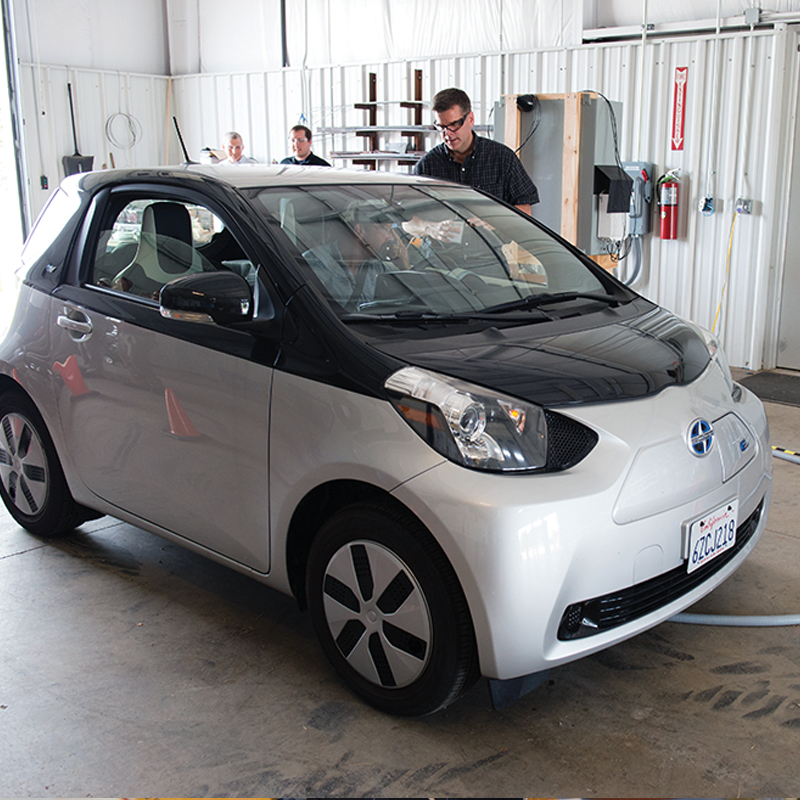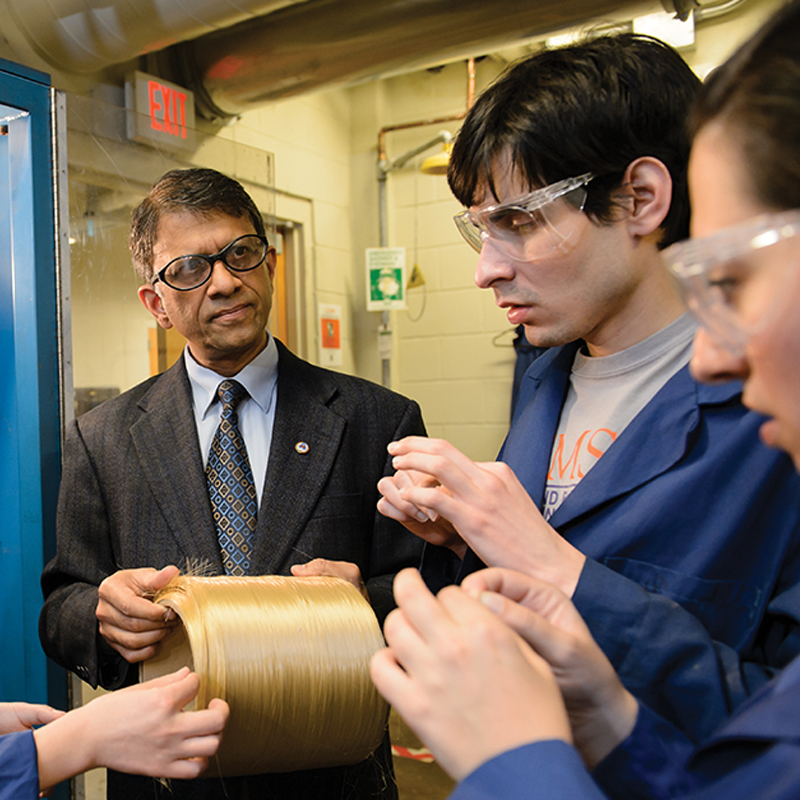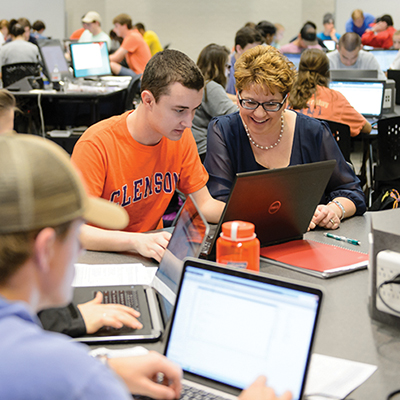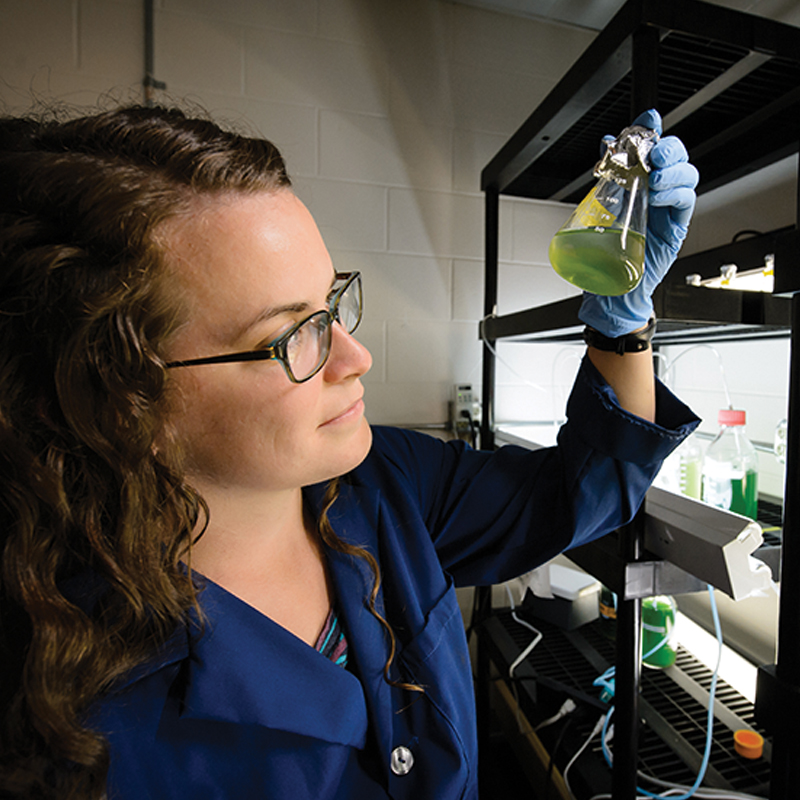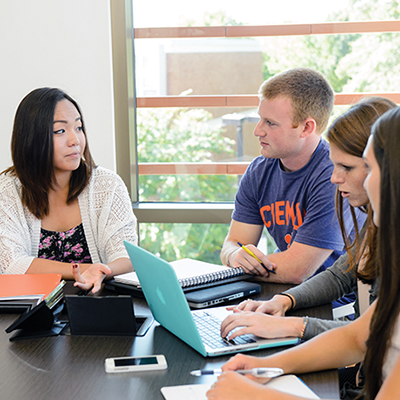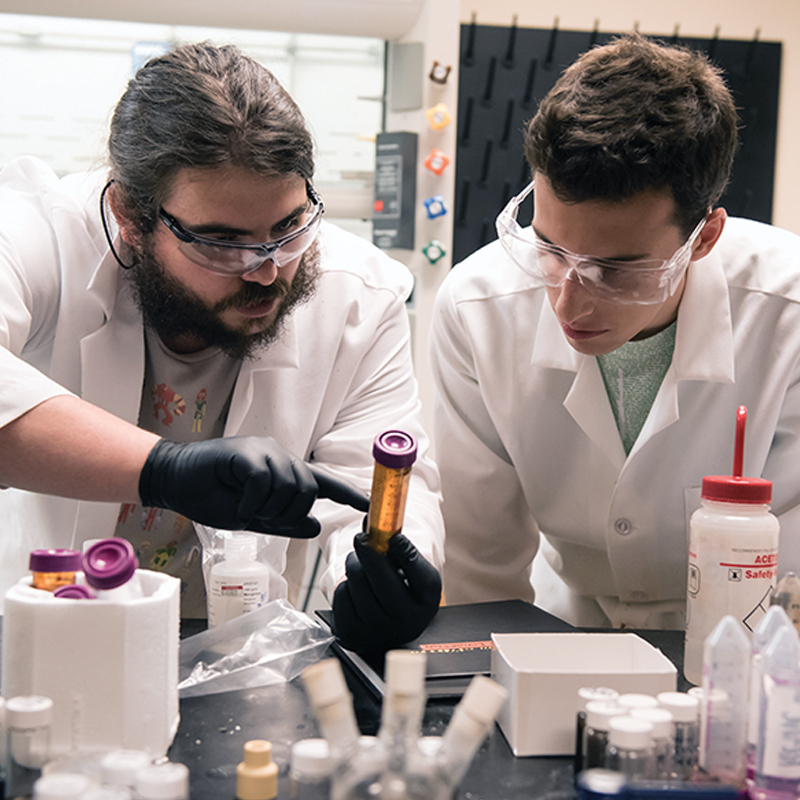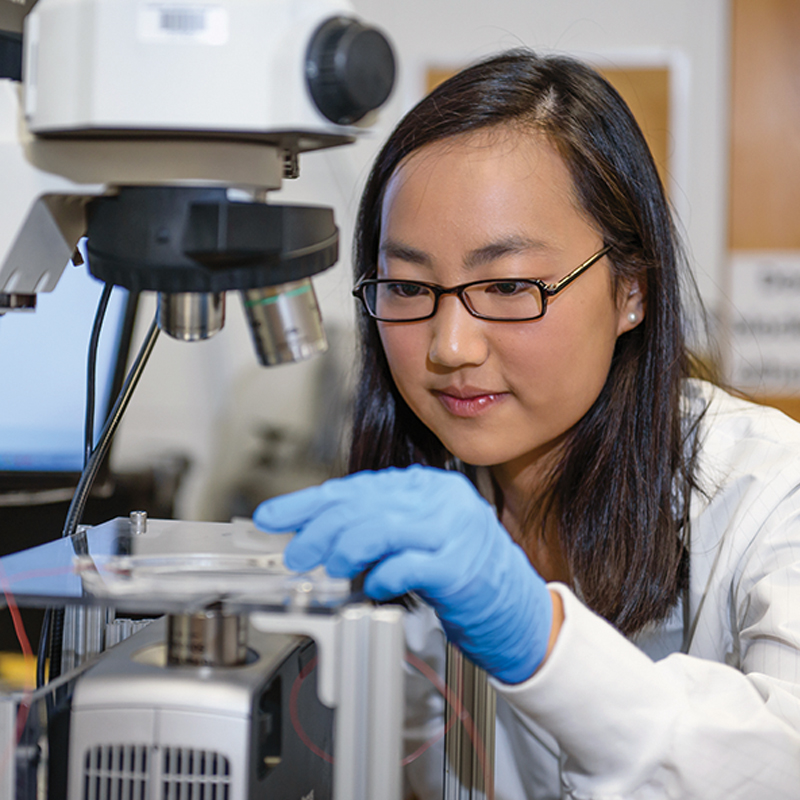Top Students
Clemson students are engineering the path to a brighter future.
■ Entrepreneurship: Bre Przestrzelski
■ Global Dimension: Shannon Kay
Top Faculty
Seven faculty members have earned national recognition for their research.
Top Alumni
Janine Bowen and Emily Wallace use their career success to advocate for diversity in the workplace.
FROM THE DEAN
This July, Clemson restructured its colleges, increasing their number from five to seven and re-envisioning the future with a bold strategic plan that puts the University on a path to solidify its place as a top public land-grant university. Our college is now the College of Engineering, Computing and Applied Sciences. The departments of chemistry, mathematical sciences, and physics and astronomy are joining the new College of Science under the leadership of interim Dean Mark Leising.
Clemson’s Board of Trustees approved this reorganization last October after a yearlong strategic planning process led by President James Clements and Executive Vice President for Academic Affairs and Provost Bob Jones. Hundreds of students, faculty, staff and various stakeholder groups engaged in this process through committees, town meetings and online discussions. The result was a new strategic plan, ClemsonForward, built on the four key foundations of Research, Engagement, the Academic Core and Living (REAL). We as a college are poised to play a key role in propelling this plan forward as we continue to nurture a rich culture of diversity, top talent, and world-class educational and research experiences, built on a foundation of cutting-edge infrastructure.
This issue of IDEAS highlights a few of the College of Engineering, Computing and Applied Sciences’ most impressive students, faculty members and alumni — the kernels of innovation we are planting today for the benefit of future generations.
Our students are doing extraordinary work that addresses the grand challenges identified by the National Academy of Engineering:
■ Bre Przestrzelski, a doctoral candidate in bioengineering, is fostering a culture of entrepreneurship across campus as Clemson’s first University Innovation Fellow.
■ Shannon Kay, who served as student body president last year, has traveled the globe while pursuing her Bachelor of Science in industrial engineering.
■ Freddy Paige, who recently received his Ph.D. in civil engineering, has crossed disciplines and developed innovative ways to teach undergraduates about living sustainably.
■ Cassidy Laird conducted research, studied abroad, won a national award, played in the Tiger Band and maintained a perfect 4.0 grade point average as an undergraduate in biosystems engineering.
■ Aaron Gordon, a civil engineering major, served as an intern for seven months with Clemson Engineers for Developing Countries, a program that is providing clean water in Haiti.
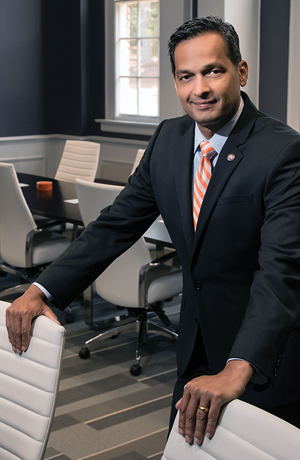
During the course of this year, seven assistant professors won some of the nation’s most prominent awards for junior faculty.
Feng Ding, Rachel Getman, Brandon Ross and Andy Tennyson won awards from the National Science Foundation Faculty Early Career Development Program. Their research involves projects ranging from engineering better medicines and implants to developing affordable fertilizers and buildings that are more responsive to change.
Joseph Scott and Yue “Sophie” Wang won awards from the Air Force Office of Scientific Research Young Investigator Program, and Mark Blenner won an award from the Early Career Faculty component of the NASA Space Technology Research Grants Program. Their research focuses on drones, unmanned vehicles and robots, and materials for long-term space exploration.
As we begin a new academic year, it is fitting that Clemson is restructuring. Universities are where students go to shape their minds as they engage with new ideas. Like people, institutions must continually evolve and adapt to new challenges and opportunities.
Standing in place is not an option. The grand challenges we face in a relentlessly changing, increasingly interconnected world are too great. Charles Darwin put it best when he said, “It is not the strongest of the species that survive, nor the most intelligent, but the one most responsive to change.”
Anand Gramopadhye, Dean
College of Engineering and Science
TOP STUDENTS
Clemson University is committed to leading the way in addressing the grand challenges identified by the National Academy of Engineering (NAE) to improve the quality of life. That’s why our students are being equipped with the knowledge and resources necessary to tackle some of the most pressing issues facing humanity in the 21st century.
Here we profile five of the best and brightest young Tigers and their efforts to advance each of the components of the NAE Grand Challenges Scholars Program: entrepreneurship, interdisciplinary collaboration, global dimension, research and service learning.
ENTREPRENEURSHIP
By Paul Alongi
BRE PRZESTRZELSKI has taken a leadership role in turning Clemson University into a campus of innovators, entrepreneurs and designers, rolling out programs that have brought new energy to the educational experience at all levels.
Przestrzelski, a doctoral candidate in bioengineering, helps bring together students, faculty members and real-world mentors to come up with new inventions and business ideas.
Her work strikes at the core of a broader nationwide effort to advance personalized learning, one of the grand challenges identified by the National Academy of Engineering.
“We’re giving students ownership of what they’re learning,” Przestrzelski said. “It’s interdisciplinary work, much like the real world. We’re moving away from an educational system that develops students who are exactly the same. Now students are creating their own jobs. They’re having to be innovative with what they’re doing after graduation.”
One of her main roles is co-founder and student leader of The Design and Entrepreneurship Network, or The DEN. She has worked closely with her adviser and The DEN co-founder, Dr. John DesJardins.
The DEN started in the Department of Bioengineering in spring of 2014 but welcomes students from all majors. Attendees of the Tuesday night meetings are engaged with content that is fresh and interactive each week.
During some of the meetings student inventors pitch their business ideas to professors and professionals, who can range from patent attorneys to angel investors. The students get on-the-spot feedback about how they can improve their ideas and what opportunities they might explore next.
At other meetings, guest speakers and students share their knowledge about topics relevant to innovation and entrepreneurship. For example, a graphic communications student group shared what they knew about personal branding, logo design and social media. Another gathering included a crash course on app development and computer programming with The Iron Yard and electrical engineering students.
The DEN meetings drew as many as 60 students a week last school year and grew out of its original meeting location in Clemson’s main library. The program moved to a Freeman Hall auditorium before settling into its current home, the Watt Family Innovation Center.
“The greatest success for me is seeing students walk out of The DEN every week becoming better leaders and better public speakers,” Przestrzelski said. “The personal growth I’m seeing in every single one of these students who is involved is what keeps me going, keeps me engaged. I think that every student should leave Clemson a more confident leader. It’s these leaders who will go on to be the innovators, whether it’s in their own ventures or previously established companies.”
Support for The DEN has come from both on and off campus, even from the National Basketball Association (NBA).
Among the supporters is Ken Carr, the NBA’s former vice president of social responsibility and player programs and current CEO of Pro2CEO. Carr gave a talk in March 2016 to over 100 students on different types of leaders and handling difficult life transitions. Trevor Booker, a former Clemson basketball star who now plays for the Utah Jazz, has supported The DEN financially and has heard students pitch their business ideas.
Przestrzelski started down the entrepreneurship path in fall 2013 when she became Clemson’s first University Innovation Fellow as part of a program run by the National Center for Engineering Pathways to Innovation, or Epicenter. It is a national program with more than 700 students nationwide at over 170 institutions of higher education and is funded by the National Science Foundation and directed by Stanford University and VentureWell.
Przestrzelski has also worked to reach students in the K-12 system. With her help, The DEN has led interactive exhibits at engineering expos for grade-school children, participated at Greenville’s iMAGINE Upstate, and volunteered to teach team-building and design thinking at Trevor Booker’s youth basketball camp. Przestrzelski also helped found a summer program for high school students, LemonADE Stand: Accelerating Design & Entrepreneurship.
Going into the 2016-17 school year, she was aiming to get every department in every college across campus to join the innovation movement she has helped to launch.
“The DEN is helping create that lasting innovation culture on campus,” she said. “There are a lot of things going on when it comes to entrepreneurship, but I think we’re playing a really critical role in that piece for the next leaders.” ✲
GLOBAL DIMENSION
By Hannah Davis
Academic excellence and extracurricular involvements have always been top priorities for SHANNON KAY, but when the industrial engineering major came to Clemson she wanted to spend more time forming meaningful relationships while still taking advantage of everything college has to offer.
When Kay first toured campus as a high school student, she asked current students what they liked most about Clemson. “They didn’t talk about just academics or organizations or athletics,” she recalls. “They talked about the University as a whole and how they loved every part, and I wanted that same well-rounded experience.”
It’s safe to say she achieved that goal. During her four years at Clemson, Kay actively participated in Greek life and student government (she served as the 2015-16 undergraduate student body president), worked as a tutor in the Writing Center, conducted departmental honors research, volunteered and studied abroad, and participated in multiple honors societies.
“One of the most defining moments of my college career was campaigning for student body president and then being elected to the position,” Kay said. “I learned to believe in the feasibility of being a leader, even if that’s something you never envisioned for yourself. If you give all that you possibly can and learn from the experience, that makes any endeavor a success.”
The Calhoun Honors College provided the framework for Kay’s impressive accomplishments, offering her collaboration not only with fellow honors students, but also with professors who challenged her to reach full potential both inside and outside of the classroom.
“Clemson is where I first felt motivated to broaden what I’ve always thought or believed,” Kay said. “The opportunities I’ve had to be a leader made an impact on how I carry myself and how I interact with other people.”
She hadn’t done much traveling outside the U.S. before college, but Kay soon discovered the importance of having diverse cultural experiences in order to better address challenges that are inherently universal and to promote innovation in a global economy.
“My honors classes facilitated the first high-level philosophical conversations I’d ever been a part of,” Kay said. “It was really influential and empowering to hear and discuss different viewpoints on such a broad range of topics. If you try to make engineering decisions based just on your own experiences in one place it’s very limiting.”
This awareness led her to study abroad with other honors students in Amsterdam, Bhutan, Ireland and South Africa.
Kay journeyed to Peru as a volunteer with the Foundation for International Medical Relief for Children and to Honduras as a volunteer with Students Helping Hondurans. She also traveled twice to Nicaragua to provide clean water for small villages through her work for Clemson Engineers without Borders.
From Central and South America, to Africa, to South Asia, to Europe and back, these experiences have given her the global perspective needed to make engineering decisions that will impact a broad range of people.
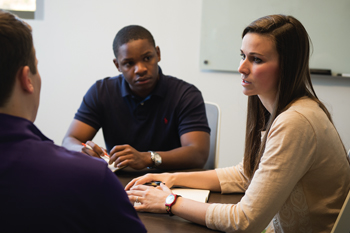
“My global perspective has changed tremendously,” Kay said. “Visiting different continents as well as traveling around the U.S. as an undergraduate has been invaluable. It’s one thing to hear about other cultures and another to see it or live it firsthand. Each time I go to another country I have to make adjustments and that gives me room to grow as a person.”
Kay graduated in May and moved to Washington, D.C., to work for two years as a business technology analyst. Then she’ll earn her master’s degree at Harvard’s Business School, where she’s already been accepted.
“Clemson is first and foremost an academic institution but there’s also a great balance of involvement and personal fulfillment,” Kay said. “As much as I’ve learned in class, I’ve learned just as much by taking advantage of opportunities the University offers to be part of a global community. It would be awesome if every student traveled abroad.” ✲
INTERDISCIPLINARY COLLABORATION
By Paul Alongi
FREDDY PAIGE might be the only Ph.D. candidate on earth to write a hip-hop song about the water cycle, and he’s certainly the only one to include a lesson about how the lakes flow in South Carolina’s northwestern corner.
“From Jocassee to Keowee and then down to Hartwell/ I hope that you’re ready for the story I tell,” he raps in “Yeah, I’m the Water Cycle.”
Paige, who recently received his Ph.D. in civil engineering, is just as comfortable behind a lectern as he is behind a microphone, and has challenged himself to venture into areas outside his expertise, including sociology and epistemology.
A Tiger since he was an undergraduate, Paige has made sustainability a cornerstone of his Ph.D. dissertation.
The research he has done involves figuring out how people who often do not have an engineering or science background can become more aware of their energy use and conserve. He created a class related to his research that blends hip-hop, video and eye-catching graphics with lecture.
“I wanted to try not being a traditional educator for a moment and focus on innovative techniques that other educators have been using,” Paige said.
His song gives students a method to quickly remember how water gets to Clemson, provides conservation tips and is among the many ways that Paige has reached across disciplines to raise awareness about living sustainably.
The multidisciplinary work he has done is helping advance personalized learning and could help ensure long-term access to clean water. Both are grand challenges that have been identified by the National Academy of Engineering.
Thanks to engineers, innovations such as the electric light and gas stove are highly reliable and remarkably simple to use. But now that people don’t have to work for their energy, they take it for granted and are less aware about how it is created, Paige said.
“My research focuses on the home and how people can learn lessons related to energy in their own way,” he explains. “I get them to tell me their stories and how they learned some wrong ideas and some good ideas.”
Paige said that many people are confused about how to monitor their energy in real time. An electric bill arrives in the mail as much as a month and a half after the energy was used. The amount owed includes taxes, fees, surcharges and peak charges.
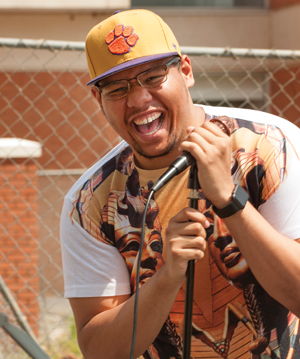
“You really don’t know how much energy you’re using,” Paige said. “Nine hundred kilowatt hours — most people don’t know what that means.”
But the lessons come in other ways. One woman told Paige that she passed the meter outside her home while the dryer was running and noticed how fast the dial was spinning.
Paige said that simple devices make a big difference. One that he uses costs $400, installs easily on the breaker and feeds information to a smartphone.
Electric bills in the United States are but one example of the many facets of his research.
Paige, who has secured a spot on Virginia Tech’s faculty, has also traveled abroad, studying in Italy. He said that energy is more expensive in Europe, so consumers are more strategic about staying cool in the summer. They may close their shutters during a certain time of day or open their windows so that wind will whip through the house.
Closer to home, Paige is working with Annie’s House in Greenville’s Nicholtown community. The home serves as a showcase of sustainable living.
Residents are learning to cook food from their garden and how gathering eggs from a chicken instead of killing it creates a continuous cycle. They also dipped into engineering, building a bioswale that filters water running across the property into the Reedy River.
“By stepping out of my field a little bit, I learned a lot and got the chance to interact with people who do things differently,” Paige said. “I feel engineers are creative, but we get in our own way. We pull out the textbook, pull out the theory, and we rely on our head knowledge. Sometimes, working with other people, more creative problem solving happens when you can just pick up a shovel and say, ‘Let’s try to figure this out. Let’s do it!’” ✲
RESEARCH
By Paul Alongi
CASSIDY LAIRD remembers seeing algae as a green nuisance that killed fish and left a layer of slime across ponds near her hometown of Fleming Island, Florida.
Then she arrived at Clemson University and had the chance to look at algae under a microscope.
“Some of the shapes were pretty cool,” Laird said. “I started saying, ‘There’s more to these things than I thought. It’s not just green slime.’”
Laird went on to major in biosystems engineering and to develop a deeper understanding of algae. Now a master’s student, she is trying to advance algae as a biofuel alternative to gasoline and studying how algae could be used to reduce the amount of carbon dioxide causing global climate change.
Her work could lead to a form of carbon sequestration, a process by which carbon dioxide is removed from the atmosphere and held in solid or liquid form. It’s also one of the grand challenges identified by the National Academy of Engineering.
“Part of the emphasis in biosystems engineering is that small actions can have a large impact on the world around us,” Laird said. “Our research and studies into the environment and sustainability are something the world dearly needs. The problems we face are global.”
Laird has excelled during her time at Clemson. She maintained a perfect 4.0 grade-point average, putting her in the top 1 percent of the University’s biosystems engineering undergraduate students. She conducted valuable research as an undergraduate, working alongside Caye Drapcho, an associate professor of biosystems engineering.
In spring 2014, Laird studied abroad, taking upper-level engineering and science classes at Universidad Politécnica de Madrid in Spain.
“I can now say that I have connections overseas and that I am bilingual,” she said. “The overall experience was definitely more than worth the work.”
Laird capped off her undergraduate experience with a prestigious honor, winning the Roger R. and Laura M. Yoerger Preprofessional Engineer of the Year Award from the American Society of Agricultural and Biological Engineers.
She graduated with her Bachelor of Science in biosystems engineering in May and is now pursuing a master’s degree in the same discipline. She’s on target to complete a program that allows students to earn their undergraduate and master’s degrees in five years.
Laird was one of 24 students to be named a fellow for the 2016-17 school year by Tau Beta Pi, the engineering honors society. Her academic record is even more impressive considering all of her leadership and community activities.
To name a few, Laird has served as vice president of the Biosystems Engineering Student Club, Adopt-A-Highway chair, co-chair of last year’s Engineers Week activities, student mentor and teaching assistant.
With so many responsibilities, Laird finds refuge in music. One of her requirements in picking a college was that it had to have a marching band. Laird joined the Clemson University Tiger Band as a freshman and quickly made friends with other alto sax players. The experience gave her the chance to travel the country and help the Tiger faithful cheer on their football team, including at the national championship game in Glendale, Arizona.
She said joining the band was one of the best things she could have done.
“You find that one group, and you start to get familiar with them,” Laird said. “You meet four times a week. Even if you don’t know anybody else, you get through the day because you’re going to see all your friends. At a certain point it becomes a family.”
From algae research to Tiger Band, Laird continues to make the entire Clemson family proud. ✲
SERVICE LEARNING
By Hannah Davis
AARON GORDON believes in taking community service to the next level. Last year, the civil engineering major spent seven months in Haiti working to improve public health as an intern with Clemson Engineers for Developing Countries (CEDC).
CEDC is a student organization that partners with the University’s Creative Inquiry program and outside sponsors. Participants include students across a wide range of disciplines seeking to advance the standard of living in developing countries while earning college credit and developing technical skills. Gordon is a founding member of CEDC and has traveled to Haiti every fall and summer since his freshman year.
“It’s an eye-opening experience to meet, talk to and befriend the people that contribute to third-world statistics,” Gordon said. “They have faces; they have names; they have stories. My biggest takeaway is that in order for these development projects to succeed, you need to look beyond the economics of the situation and engage with the community.”
His most memorable Haitian project brought desperately needed repairs to the St. Jean School in the remote village of Morne Michel. The challenge was to create a solution to the leaking school roof, eroding foundation, nonexistent lighting and inadequate drainage system. By the time Gordon left Haiti, the school had a new courtyard and roof, reinforced foundation and solar panels with light bulbs so students could study and adults could take night classes.
In addition to gaining a deeper appreciation of other cultures, Gordon is making a lasting difference in the quality of life for the people of Haiti. “I’ve become more relaxed because working in a developing country puts the things you worry about into perspective,” he says. “The feeling of accomplishment you get after finishing a project that helped someone else is amazing.”
Another project he was heavily involved in centered on the Ba Cange Water System. The local population had to climb over 500 steps to reach a clean water source and often ended up drinking contaminated water instead, leading to disease outbreaks. Gordon worked with CEDC team members to design and build a small water treatment system that now provides access to clean water.
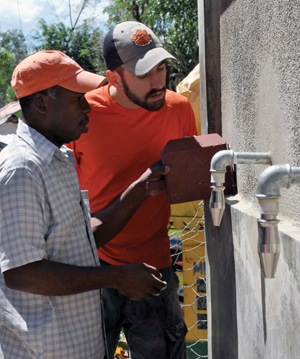
“I love being the person responsible for taking projects designed in the classroom and making them a reality in another country,” he explains. “If anything made someone’s life a little easier — saving them a long trip to find clean water or providing light to study or improving the quality of their school building — I can truthfully say that everything was worth my time.”
Gordon has always preferred working outside to working in a lab. The opportunities he’s had through Clemson for hands-on application in the field have strengthened his confidence and passion for being a professional engineer. Besides spending time in Haiti, he’s studied abroad in South Africa and recently took an expedition to the Grand Canyon.
As a Calhoun Honors College student and National Scholar, Gordon conducted honors research that focused on sustainable transportation in the developing world and green storm water infrastructure.
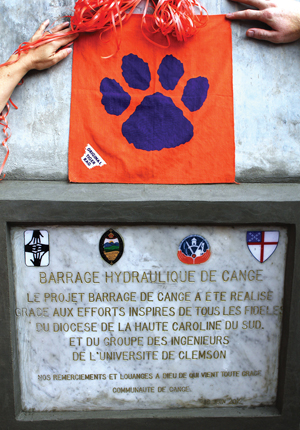
He also helped start the Clemson Grand Challenge Scholar Program his freshman year. This program prepares students to handle the vital tasks that face 21st century engineers.
“You should always be thinking about how your specific field relates to one of these challenges, so that you can best decide how to invest your time in education,” Gordon said.
His service learning experiences have motivated him to bring the technical expertise he’s acquired at Clemson to bear on societal concerns. After graduation, he plans to continue designing the infrastructure and solutions needed to address problems in developing countries.
“When I apply for jobs, I can talk about what I’ve accomplished in an educational environment, corporate structure and real-world situations,” Gordon said. “My passion for engineering has developed and deepened along with my social consciousness as I’ve served others. And after spending seven months without hot water, air conditioning or reliable electricity, I feel prepared for anything.” ✲
TOP FACULTY
By Paul Alongi
Clemson faculty conduct research with vital goals such as improving medicines, securing cyberspace, making solar energy cost-competitive, advancing technology, providing access to clean water and ending extreme poverty and hunger. The high-profile awards recently brought home by seven junior faculty members underscore the excellence in research that is the standard for the College of Engineering, Computing and Applied Sciences.
Feng Ding, Rachel Getman, Brandon Ross and Andy Tennyson won prestigious awards from the National Science Foundation, while Joseph Scott and Yue “Sophie” Wang won top awards from the Air Force Office of Scientific Research. Mark Blenner also won an award through NASA.
Seven of the nation’s top awards in less than a year is a milestone for a University that recently stepped up efforts to bolster its reputation for high-quality research. The awards brought more than $3.3 million in new research funding into the University.
Anand Gramopadhye, dean of the College of Engineering, Computing and Applied Sciences, called the awards a testament to the researchers’ creativity, dedication and hard work. “South Carolina deserves a world-class research university, and the awards confirm that these seven Clemson University faculty members are the top young engineers and scientists in their disciplines,” Gramopadhye said. “Having top award winners speaks highly of Clemson’s research environment, which bodes well for the entire state. Through research, we help create the jobs of the future, inspire a new generation of grand thinkers and conceive the innovations that overcome some of humankind’s most complex challenges.”
Ding, Getman, Ross and Tennyson won awards through the National Science Foundation’s Faculty Early Career Development Program, often called the NSF CAREER award. Scott and Wang received awards through the Air Force Office of Scientific Research Young Investigator Program. Blenner’s award comes through the Early Career Faculty component of the NASA Space Technology Research Grants Program.
The awards were announced shortly after the University reached another key marker in research prominence.
The Carnegie Classification of Institutions of Higher Education included Clemson in its R1 category for doctoral universities. This category is reserved for universities with the highest research activity.
National Science Foundation Faculty Early Career Development Program Award (NSF CAREER Award):
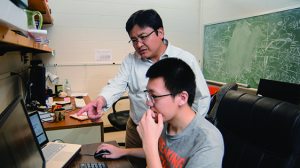 Feng Ding, assistant professor of physics. He will use the $506,569 his team was awarded to better understand nanoparticles. They are tens to thousands of times smaller than the width of a human hair and have helped improve everyday products ranging from baseball bats to eyeglasses. Nanoparticles show promise for engineering better medicines but have also raised concerns about environmental and biological safety.
Feng Ding, assistant professor of physics. He will use the $506,569 his team was awarded to better understand nanoparticles. They are tens to thousands of times smaller than the width of a human hair and have helped improve everyday products ranging from baseball bats to eyeglasses. Nanoparticles show promise for engineering better medicines but have also raised concerns about environmental and biological safety.
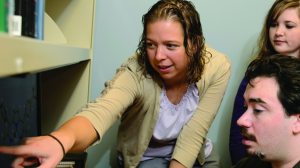 Rachel Getman, assistant professor of chemical engineering. She will use the $503,922 her team received to explore new ways of making ammonia, a key ingredient in commercial fertilizers. The current method for making ammonia is expensive and energy-intensive, keeping it out of reach for about half the world. Getman and her team have a long-term goal of using water instead of hydrogen gas to create ammonia, which could lower the cost and amount of energy required.
Rachel Getman, assistant professor of chemical engineering. She will use the $503,922 her team received to explore new ways of making ammonia, a key ingredient in commercial fertilizers. The current method for making ammonia is expensive and energy-intensive, keeping it out of reach for about half the world. Getman and her team have a long-term goal of using water instead of hydrogen gas to create ammonia, which could lower the cost and amount of energy required.
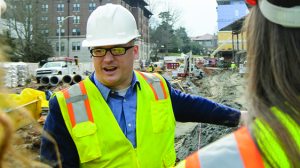 Brandon Ross, assistant professor of civil engineering. His team has received $500,000 to help make buildings more adaptable to change so that fewer become obsolete and face the wrecking ball before their time. His team is developing a set of tools that helps measure building adaptability, similar to the LEED certification that recognizes best strategies and practices for making buildings environmentally friendly.
Brandon Ross, assistant professor of civil engineering. His team has received $500,000 to help make buildings more adaptable to change so that fewer become obsolete and face the wrecking ball before their time. His team is developing a set of tools that helps measure building adaptability, similar to the LEED certification that recognizes best strategies and practices for making buildings environmentally friendly.
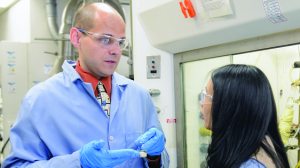 Andy Tennyson, assistant professor of inorganic chemistry. His $500,000 award will cover five years of research into modifying the artificial materials that go into the body as implants. His long-term goal is to help create medical implants that resist failure by preventing chemical degradation. He and his team hope that through their work, patients will be less likely to reject implants, preventing potentially life-threatening surgeries.
Andy Tennyson, assistant professor of inorganic chemistry. His $500,000 award will cover five years of research into modifying the artificial materials that go into the body as implants. His long-term goal is to help create medical implants that resist failure by preventing chemical degradation. He and his team hope that through their work, patients will be less likely to reject implants, preventing potentially life-threatening surgeries.
With these four new awards, Clemson had 21 active NSF CAREER grants, representing more than $8.1 million in funding, as of spring 2016.
Air Force Office of Scientific Research Young Investigator Program Award
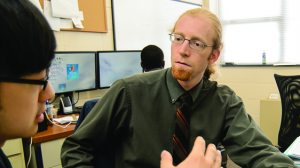 Joseph Scott, assistant professor of chemical engineering. His team has received $330,000 and will use the money to develop mathematical techniques that account for uncertainties in the results of computer simulations. This could help autonomous aircraft calculate trajectories that avoid danger without having to play it too safe. The Scott team believes these techniques could also be used for other applications, such as safety verification for chemical processes.
Joseph Scott, assistant professor of chemical engineering. His team has received $330,000 and will use the money to develop mathematical techniques that account for uncertainties in the results of computer simulations. This could help autonomous aircraft calculate trajectories that avoid danger without having to play it too safe. The Scott team believes these techniques could also be used for other applications, such as safety verification for chemical processes.
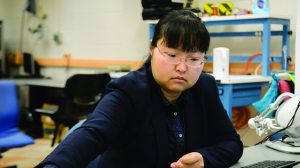 Yue “Sophie” Wang, assistant professor of mechanical engineering. Her team has received $360,000 to help the Air Force overcome some of the challenges it faces in using teams of unmanned vehicles and other robots to carry out missions under human supervision. The primary focus of Wang’s research will be on helping the Air Force with high-priority missions that include intelligence gathering, surveillance and reconnaissance. Wang also won a NSF CAREER award in 2015.
Yue “Sophie” Wang, assistant professor of mechanical engineering. Her team has received $360,000 to help the Air Force overcome some of the challenges it faces in using teams of unmanned vehicles and other robots to carry out missions under human supervision. The primary focus of Wang’s research will be on helping the Air Force with high-priority missions that include intelligence gathering, surveillance and reconnaissance. Wang also won a NSF CAREER award in 2015.
Only 12 other institutions had multiple awards through the Air Force program this year, putting Clemson in the company of Princeton University, the California Institute of Technology and North Carolina State University.
NASA Early Career Faculty Award
 Mark Blenner, assistant professor of chemical and biomolecular engineering. He received $600,000 for three years of research. Blenner and his team will study microbial synthesis of nutraceuticals and materials to enable long-term space exploration. The proposal focuses on engineering yeast to convert respiration carbon dioxide, algae biomass and human urine into nutritional omega-3 fats and 3D printable plastics. Blenner also won an award in 2015 through the Air Force Office of Scientific Research Young Investigator Program.
Mark Blenner, assistant professor of chemical and biomolecular engineering. He received $600,000 for three years of research. Blenner and his team will study microbial synthesis of nutraceuticals and materials to enable long-term space exploration. The proposal focuses on engineering yeast to convert respiration carbon dioxide, algae biomass and human urine into nutritional omega-3 fats and 3D printable plastics. Blenner also won an award in 2015 through the Air Force Office of Scientific Research Young Investigator Program.
Blenner was among eight researchers from seven institutions in 2015 to win an award through NASA’s Early Career Faculty Program, putting Clemson in the company of Stanford University and Washington University in St. Louis.
The grants were awarded before the colleges reorganized, and all faculty members were in the former College of Engineering and Science. Ding and Tennyson are now in the new College of Science while Getman, Ross, Scott, Wang and Blenner are in the College of Engineering, Computing and Applied Sciences. ✲
IDEAS Fall 2016
Alumni Spotlight
TOP ALUMNI
Clemson graduates share a connection that starts on campus and extends to places all over the world. They pursue many different careers but are united in their passion for making a difference. Two alumni, Janine Bowen and Emily Wallace, are channeling their success to give a voice to underrepresented students and promote diversity in the workplace.
By Paul Alongi
Atlanta attorney Janine Anthony Bowen helps companies negotiate strategic technology and intellectual property deals. Emily Wallace helped build software development company SAS into a global powerhouse of more than 15,000 employees.
Bowen and Wallace took separate career paths, but their roots are in the same place.
Clemson University helped prepare each to break through barriers that might have held others back. Both went on to successful careers in major Southeastern cities and to serve as role models for students who are underrepresented in science, technology, engineering and math.
Their successes underscore the value of having a diverse group of students in the pipeline that runs from academia to the workplace.
“Women and people of color can look at me and say, ‘She started this journey and finished it just like I want to do,’” Bowen said. “That’s empowering for people when they can see someone who has achieved what they want to achieve.”
Bowen and Wallace, who attended Clemson several years apart, share another commonality. Both have given back to their alma mater by establishing scholarship endowments for students in two programs, PEER and WISE, both within the College of Engineering, Computing and Applied Sciences.
These programs help underrepresented students succeed at Clemson and make the transition to the workplace. “It’s very important to me because I have felt the sting of not being treated seriously because of my gender, and I know how upsetting that can be,” Wallace said. “As a hiring manager I want to hire the best people and also a diverse set of people so we get a diverse set of ideas.”
Bowen helps technology companies and technology-rich businesses negotiate strategic intellectual property deals with a number of companies, including those in the Fortune 500. She was founding partner of JACK Attorneys & Advisors, an Atlanta technology law boutique that specialized in representing technology companies. She merged her practice in 2015 with the national law firm LeClairRyan PC, where she is now a shareholder.

Janine Anthony Bowen
Wallace serves as senior director of the Knowledge Management Center at SAS, a software development company based in Cary, a city in North Carolina’s Research Triangle. She and her husband, Jack Wallace, were among the first 100 employees when they began working at the company 35 years ago.
Bowen is directing her support at PEER, or Programs for Educational Enrichment and Retention. Wallace has targeted WISE, which stands for Women in Science and Engineering.
PEER and WISE share a newly renovated office in 158 Freeman Hall. It’s common to find students grouped together on the couches, trading tips about classes, planning a networking event or drawing from a test bank to study for exams.
Serita Acker, the director of PEER and WISE, said it’s an honor to have alumni support for the programs. “These scholarship endowments will defray some of the educational costs and serve as tremendous encouragement for our students,” Acker said. “The involvement of our Clemson alumni is very important to the success of PEER and WISE. Our alumni serve as excellent role models because of their past Clemson experiences. I am very grateful for all of their involvement.”
Bowen received a bachelor’s degree in 1989 and a master’s degree in 1991, both from Clemson in industrial engineering. She earned a juris doctor from Georgia State University College of Law in 1998.
She has served as a capital campaign volunteer for the college and currently serves on the advisory board and the Clemson University Foundation board. She established the Janine Anthony Bowen ’89 Industrial Engineering Endowment and the Jacquelwyn Willis Anthony PEER Endowment, named in her mother’s honor. In recognition of her contributions Bowen won Clemson’s Distinguished Service Award this year.

Emily Wallace
While a student, Wallace served as the first female director of Clemson University’s student radio station, WSBF. She guided the station through a time when the campus was divided between rock ‘n’ roll and a more traditional format. She received her Bachelor of Arts in math in 1972.
Wallace and her husband have established a scholarship through the college for students underrepresented in the STEM fields.
As Bowen and Wallace advocate for underrepresented students, they see challenges ahead but also reason for optimism. Wallace said what makes her optimistic is that the issue is being discussed and that people are aware that it needs to be addressed.
“I look around companies like SAS where I work, and I see it already happening,” she said. “In my group, I have two female managers reporting to me and two male managers. When I go to meetings here, I see many faces of different cultural backgrounds and a very strong mix of genders. I do see positive change starting to happen in the workplace.”
Bowen said that people should keep trying — that hope hasn’t been lost. “As we see our country becoming more diverse, really our hands are being forced,” she said. “If we want to continue to be competitive in the international marketplace, we must take advantage of the full scope of the resources that are made available to us. That scope of human resource is very diverse.”
News from Around the College

Tata Trusts Support Automotive Engineering Fellowships
South Carolina is broadening its connection to the world’s second most populous nation with the help of retired business leader Ratan Tata, who has been called the father of modern industry in India.…
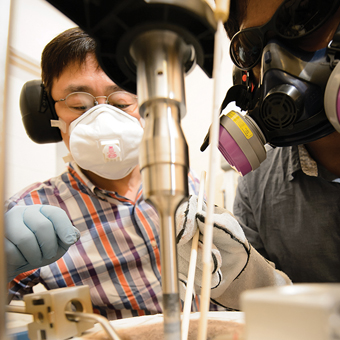
Energy-Efficiency Breakthrough
A Clemson University researcher is part of a team that has developed a new way of improving a lightweight metal, raising hopes it could be used to make a wide range of products more energy efficient, according to a paper published in the journal Nature.…

Clemson Wins Grant for Textile Manufacturing Innovation
The Walmart Foundation and the U.S. Conference of Mayors have announced that Clemson University is one of this year’s U.S. Manufacturing Innovation Fund grant recipients…
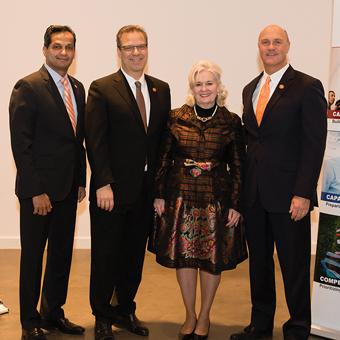
National Engineering Forum Comes to South Carolina
Clemson University researchers are building what could be the first app to search photos and videos for signs of cyberbullying as experts grow concerned that defenses are falling short in the face of advancing technology.…
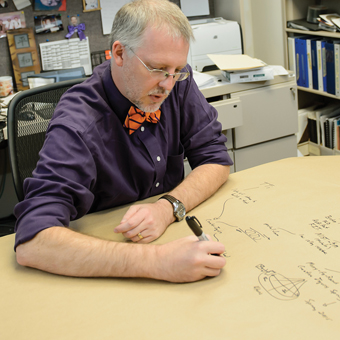
Growing Crops on Deep-Space Missions Moves from Science Fiction to Reality
Star Trek characters could instantly summon any food in the galaxy by calling out to their computer, but until a replicator becomes available, real-life space explorers might have to grow their own crops.…

Four Engineering Students Named University Innovation Fellows
Four Clemson University engineering students have been named University Innovation Fellows by the National Center for Engineering Pathways to Innovation.…
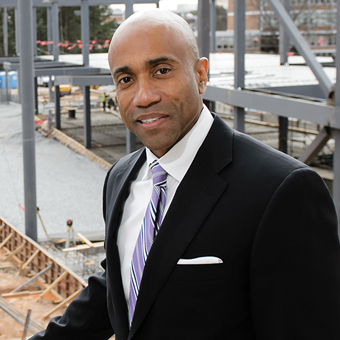
Benmosche Endowed Professorship in Risk Engineering and Systems Analytics
James R. Martin has been named the first holder of the Robert Benmosche Endowed Professorship in Risk Engineering and Systems Analytics…
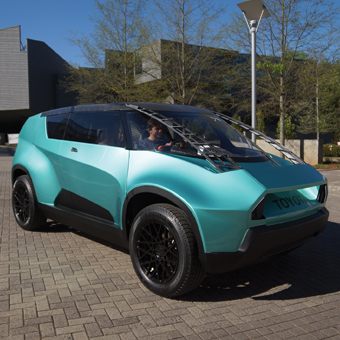
Department of Automotive Engineering helps Toyota Unveil Concept Vehicle
In 2020, young car buyers of Generation Z will be shopping for vehicles that make their entrepreneurial, mobile lifestyles easier.…
The Watt Family Innovation Center: A Model for Creativity and Collaboration
Clemson University’s new Watt Family Innovation Center is an ultra-modern, highly flexible facility where students, faculty and industry partners will collaborate, create, innovate and communicate using state-of-the-art technology and interactive learning systems.
The building is in many ways a model for modern education, said the center’s executive director, Clemson alumnus Charles Watt.
“Our mission always has been the 21st century education model recommended by the National Science Foundation,” Watt said. “We tried to incorporate what they recommended in our concept phase, using the kind of ecosystems and holistic systems that they talked about.”
Watt is confident that the innovation center will be the model for advanced academic buildings for all other universities. Every detail of the building is designed to foster creativity and collaboration, and pave the way for the flow of ideas and concepts among different disciplines at Clemson.



